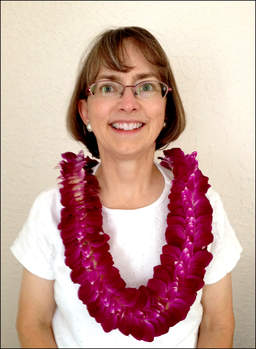I grew up immersed in geography. My mother, who had been a librarian in a children’s section of a city library before marrying my father, shared with me and modeled a love of learning and reading. Some of my favorite books in our home library were the Childcraft series, with topics like World and Holidays and Customs.
My father, a farmer, gave me a love of nature and the out-of-doors, as I worked alongside him. He also instilled in me a great geographic sense of bearing and direction, as we would go fishing on the nearby river, or for a drive through the nearby desert, which was filled with volcanic lava flows. He would often remind me that when the snow was gone on the mountaintop in the distance, the irrigation canal water that ran through our area would have to go off natural flow. We would then have to start drawing down on our water allotment, which came from reservoirs upriver.
In Jr. High school, I took Mr. Horning’s class, which was full of geography. I learned about the world and imagined what other places and people were like. (At that point, I never dreamed I would actually have the opportunity to travel to other parts of the world.) Next, came Mr. Peterson’s class in High School. He was a masterful Social Studies teacher who made the events, places, and people come alive, and helped build upon that spark of interest that had been ignited in me earlier.
Later, after finishing three years of college and university, I chose to serve a mission to Argentina for my church. What a perfect place for me, a farm girl who had never before even traveled on a plane, to go and experience. Before going, my travel group attended a culture class to help us in the transition to a new country and culture. Through the enthusiasm and efforts of the culture class teacher, I gained a love of the country and its people, even before I arrived in Argentina.
Once there, I quickly adapted to my surroundings and, although my castellano (the Spanish spoken in Argentina) was very limited at first, that preparation served me very well. I arrived during the first part of December at a city near a large river. This brought me my first real understanding of the hemispheres, as it was the middle of summer there, the seasons being opposite. On Christmas day, most of the Argentines were found at the river, or in parks, in shorts and t-shirts. I remember writing a letter to my parents to tell my father that it was so humid there that all a farmer in that region of Argentina had to do was plant the seeds, watch the crops grow, and then harvest them. (This was all very different from the gravity irrigation for the farms in the desert area back home.) While in Argentina, I also lived in a northern province area just south of the Tropic of Capricorn where the dirt was a deep red. That area had lush plant growth including grapefruit, avocados, oranges, etc. Lagoons and palm trees lined the dirt roads I walked daily.
For me, the time I spent in Argentina was not just a series of physical geography lessons, but it also provided me with a great opportunity to compare and contrast the cultural heritage, lifestyles, and traditions of four very distinct areas within Argentina. There were the different cities and regions, which had a very distinct Italian, German, or Spanish (descendants from Spain) influence, as well as, small pockets of Japanese neighborhoods. In addition, there were the native indigenous peoples who lived mostly in the north. During my stay, I also learned much about the natural resources and the economic factors that can play such an important part of understanding a region, or country.
Upon returning to the U.S.A., I finished my university studies with a degree in Elementary Education. My first year of teaching, a brand new Laotian refugee student named Somphaphone Phontirath, was placed in my class, (because I spoke a second language, Spanish??) Luckily, another refugee student, named Vinay, had lived in the U.S. longer and was able to act somewhat as an interpreter for the rest of us. Sharing that year with Somphaphone was a great way to start off my teaching career. My students learned a lot about Southeast Asia, and the cultural do’s and don’ts of much of that region. More importantly, they learned the positive lessons of human geography that I would not otherwise have been able to teach them.
The following year, I began teaching Spanish Immersion 5th grade. My goal was to not only have my U.S. students leave with the ability to speak Spanish, but also to understand the cultural heritage and geographic settings of Latin America. I tried to use my own experiences in Argentina to help emphasize that language alone will not help you truly understand the people of other countries.
In an effort to extend that understanding of cultural heritage and diversity to all the students at my school, I helped start an annual Foreign Language and Culture Week; a tradition that carried on for the 11 years at my first school, and that has continued for the past 19 years at my present school. It continues to be a powerful week of geographic learning. We include music, language, traditional foods and dress, along with artistic performances during a school wide assembly. I believe it truly opens up the world through the positive, exciting, and very engaging week celebration for our young students.
After moving to our new school, I was given the assignment to teach Social Studies to all of the 5th and 6th grade students in my school. Although I had personal experience traveling to other parts of the world, I was at a loss and thought, “Where do I start?” The 6th grade curriculum at that time was the Eastern Hemisphere, with 5th grade focusing on the Western Hemisphere. I quickly latched onto two really great atlases. Their lesson started off by teaching students “how” to use an atlas, maps, and globes. Then they proceeded to teach physical and cultural geography. Wanting more help and ideas, I started attending the Utah Geographic Association (UGA) meetings. The presentations and feelings of professionalism I was greeted with at those meetings, were engaging and renewing for me.
Around that same time, one of my teacher colleagues, Dallas Smith, invited me to become a member of the district Social Studies committee, along with Doug Anderson, the UGA Co-coordinator. One of the powerful teaching points that Dallas taught me was the importance of teaching geography. He always stressed that “geography is the stage where the action takes place, and the action is the history that takes place on that stage”.
My work on that committee led me to other committee and leadership opportunities. I served on our school district’s TAH grant steering committee as a member and master teacher, and I also served as part of the Utah State Office of Education 3rd-6th Grade Social Studies Core Revision Committee. Along with other members of those committees, I worked hard to ensure that geography always took its prominent place in our curriculum and in the teaching strategies and materials we used.
Another experience that helped me add to my teacher’s tool kit with strategies and resources was attending the Library of Congress Summer Teachers’ Institute in Washington, D.C. It opened up a whole new world of possibilities for me. (And of course, I especially loved the Map Collection). Previously, I had tried hard to use primary sources in my teaching, but finding, and then going back to retrieve them at a later date had been so frustrating to me. That Library of Congress Educational Outreach training helped simplify the finding, harvesting, and teaching with primary sources. Now I even have my students find and harvest their own copies of maps, images, documents, etc., so that they can gain a better understanding of their curriculum topic. It’s also so exciting that many primary sources that were first in several different formats (print, audio, visual) are becoming available to all of us digitally. What a great wealth of resources that we can access right from our classrooms. I encourage teachers at all levels to visit, or revisit the Library of Congress Teachers Page. I believe you will be excited at what you’ll find already available, no matter what level of geography you teach (http://www.loc.gov/teachers/). Currently, I am a Teaching With Primary Sources Teachers Network Mentor, so I am happy to share with you another helpful site if you want more help, or ideas with finding, or using, primary sources. Check out the new TPS Teachers Network at: http://tpsteachersnetwork.org/register (TPS stands for Teaching with Primary Sources Teachers Network)
Several years ago, because of my previous committee associations, I joined the Utah Geographic Alliance (UGA) leadership team as the secretary. Within that organization, I have especially enjoyed working with the UGA Co-coordinators, Dr. Norma Jean Remington and Doug Anderson, and the other board members, to help organize UGA activities, conferences, and professional development sessions. Our goal continues to be to provide professional development opportunities that will continue to do for attendees what those first UGA meetings which I attended, did for me – be inviting, engaging, and renewing, while always treating our fellow teachers as the true professionals they are. Dr. Remington and Doug have been model mentors and I feel privileged to enjoy such a long, positive, professional association with them. In my mind, they have helped keep geography at the forefront of Utah’s curriculum. They are the reason I joined NCGE about four years ago and attended my first NCGE conference.
My attendance at the NCGE annual conferences has continued to provide me with personal learning opportunities that are easily transferrable to my 5th grade students back in my classroom. Since I am a very visual learner, each conference location has helped me complete the story for my students, by providing me a visual “stage” as Dallas Smith would say. From the Alamo (San Marcos), to the Mile High Capitol building for its Centennial Celebration (Denver), to the Shiloh Battlefield, the Corinth Crossroads, the Mississippi River, and the Civil Rights Museum, (Memphis), to this year’s fieldtrip to Tangier Island out in the middle of Chesapeake Bay, I have gained so much to include in my teaching tool kit. Hand in hand with the great geographic personal experiences, has been the warm collegiality I have felt. I have been tutored by fellow geographers, and teachers, while attending NCGE conference sessions, and while visiting with them at other conference activities.
Through state and national geography conferences, I have also learned of other professional development opportunities, such as the Goethe Transatlantic Outreach Program to Germany and the Japanese Fulbright Memorial Fund. Those experiences were full of cultural and physical geographic experiences that helped me gain a deeper understanding of those countries, and thus enrich and enliven student learning.
My goal as a teacher of geography (like my culture class teacher taught me) is to help the world, its natural beauties, and people, with their distinct cultures and backgrounds, come alive for my students. I encourage all teachers, but especially elementary teachers, to join and participate in the National Council for Geographic Education. Your involvement will enrich, renew and reinvigorate you and your teaching. That’s what my professional involvement in the Utah Geographic Alliance and National Council for Geographic Education has done for me.
Ruth King


